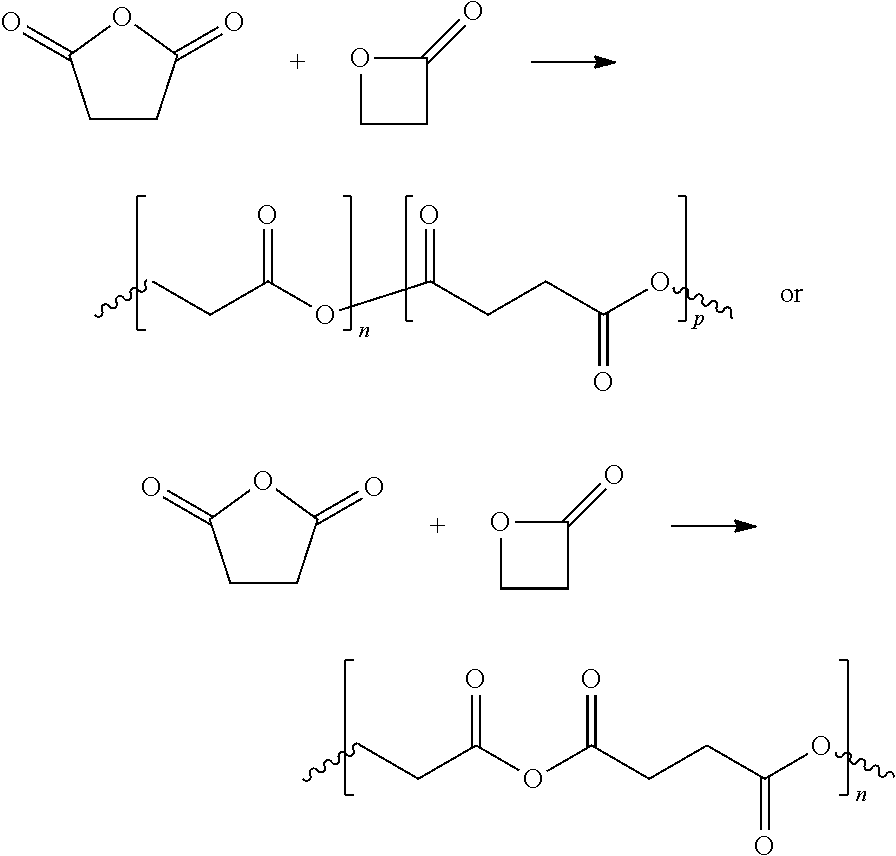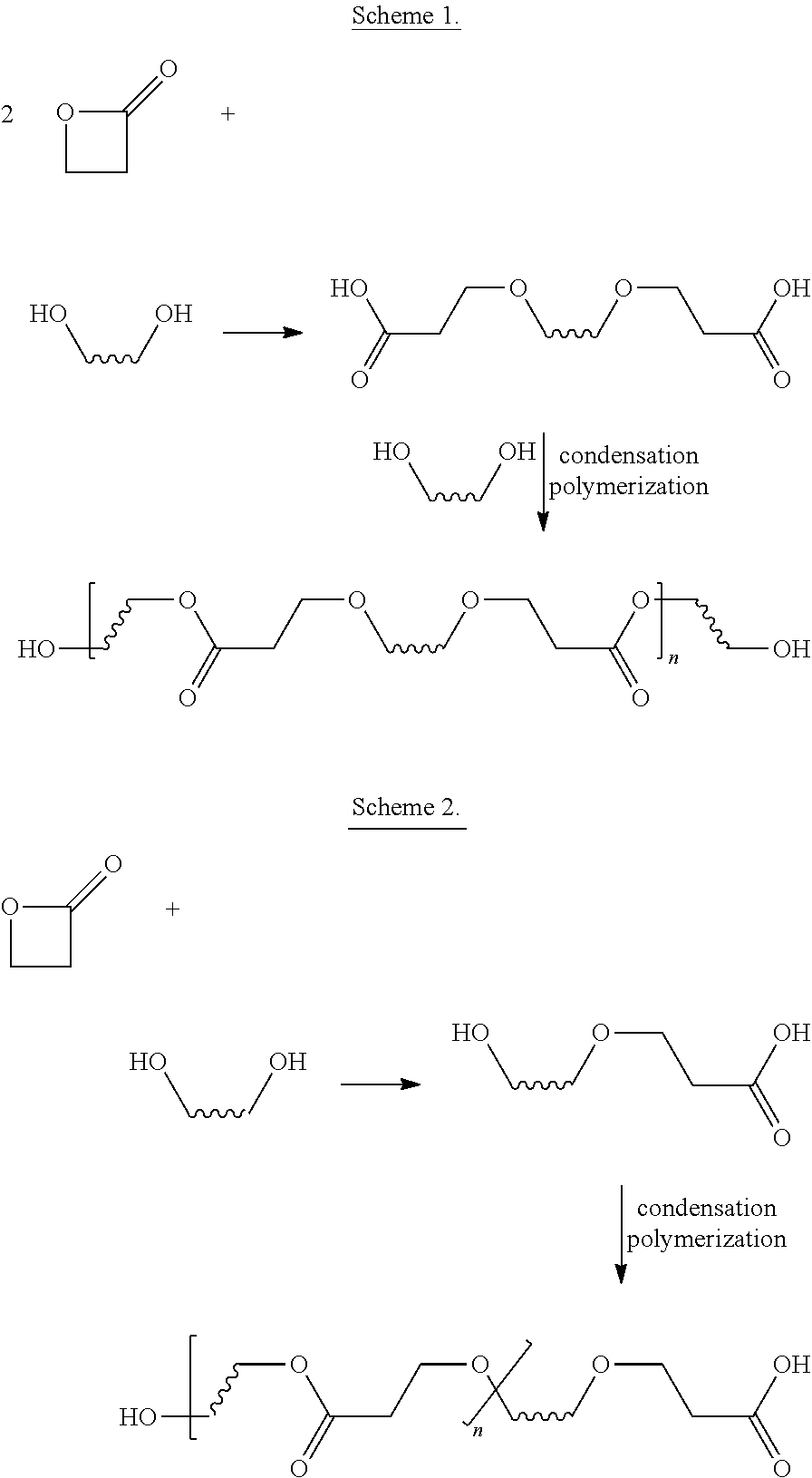Beta-propiolactone based copolymers containing biogenic carbon, methods for their production and uses thereof
- Summary
- Abstract
- Description
- Claims
- Application Information
AI Technical Summary
Benefits of technology
Problems solved by technology
Method used
Image
Examples
Embodiment Construction
[0029]The following description sets forth exemplary methods, parameters and the like. It should be recognized, however, that such description is not intended as a limitation on the scope of the present disclosure but is instead provided as a description of exemplary aspects.
Definitions
[0030]The terms bio-content and bio-based content mean biogenic carbon also known as bio-mass derived carbon.
[0031]In some variations, bio-content (also referred to as “bio-based content”) can be determined based on the following:
% Bio-content or Bio-based content=
[Bio(Organic) Carbon] / [Total (Organic) Carbon] 100%,
[0032]as determined by ASTM D6866 (Standard Test Methods for Determining the Bio-based (biogenic) Content of Solid, Liquid, and Gaseous Samples Using Radiocarbon Analysis).
[0033]The bio-content of the polymers may depend based on the bio-content of the beta-propiolactone used. For example, in some variations of the methods described herein, the beta-propiolactone used to produce the polymer...
PUM
| Property | Measurement | Unit |
|---|---|---|
| Fraction | aaaaa | aaaaa |
| Fraction | aaaaa | aaaaa |
| Fraction | aaaaa | aaaaa |
Abstract
Description
Claims
Application Information
 Login to View More
Login to View More - R&D
- Intellectual Property
- Life Sciences
- Materials
- Tech Scout
- Unparalleled Data Quality
- Higher Quality Content
- 60% Fewer Hallucinations
Browse by: Latest US Patents, China's latest patents, Technical Efficacy Thesaurus, Application Domain, Technology Topic, Popular Technical Reports.
© 2025 PatSnap. All rights reserved.Legal|Privacy policy|Modern Slavery Act Transparency Statement|Sitemap|About US| Contact US: help@patsnap.com



